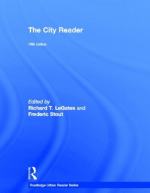
|
| Name: _________________________ | Period: ___________________ |
This quiz consists of 5 multiple choice and 5 short answer questions through Part VI: The Future of The City.
Multiple Choice Questions
1. Who discuss the implications of social complexities and question what the advantage of interests implies, according to the author of "Regime Theory and Urban Politics"?
(a) Politicians.
(b) Intellectuals.
(c) Scientists.
(d) Neo-pluralists.
2. What is the third of the five factors which "city of tomorrow" would emerge in "Ecumenopolis, World City of Tomorrow"?
(a) Society.
(b) Nature.
(c) Man.
(d) Networks.
3. According to Ernest W. Burgess what is central to the expansion of cities?
(a) The mayor's office.
(b) Decentralization.
(c) Wealth.
(d) Culture.
4. When was "The Almost Perfect Town" first published?
(a) 1953.
(b) 1952.
(c) 1956.
(d) 1957.
5. What research method involves the analysis of statistical data?
(a) Number crunching.
(b) Political.
(c) Qualitative.
(d) Quantitative.
Short Answer Questions
1. What conquistador wrote an eyewitness account of the conquest of Mexico by the Spaniards under Hernán Cortés?
2. What kind of cities does Ebenezer Howard present as a protest against overcrowding?
3. When was Patrick Geddes's "City Survey for Town Planning Purposes, of Municipalities and Government" first published?
4. Urban economists tend to study the economics of cities using what kind of methods, according to LeGate in "How to Study Cities"?
5. When was "A Contemporary City" first published?
|
This section contains 193 words (approx. 1 page at 300 words per page) |

|




